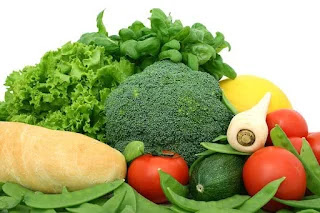You've certainly seen countless fad diets on the internet, and they almost all make too many promises and deliver too little. The ketogenic diet, however, is distinct since it was created by medical experts and is backed by research. It has many advantageous health effects and quickens the weight-loss process.
There are innumerable weight-loss regimens, and most of them follow a similar strategy. They lower the number of calories you consume and/or the amount of fat or carbohydrates you consume. The issue is that most of these diets take a long time to start producing benefits (and most people want faster results).
However, you should be aware of a few things before trying the keto diet plan. a few key aspects. Let's take a quick look.
The Keto Diet: What Is It?
The ketogenic diet is abbreviated as the keto diet. It belongs to the category of very low carbohydrate diets because it calls for consuming the fewest amount of carbohydrates possible. It is predicated on the idea that while your body prefers to burn carbohydrates for fuel, it has a backup metabolic process that it can use to burn fat if you aren't eating any carbohydrates. Therefore, the organism starts a process known as ketosis when its carbohydrate consumption reduces to almost zero. In essence, lipids are burned instead of carbohydrates.
In the metabolic process known as ketosis, your body's enzymes get ready to build the ATP molecule from fatty acids. Essentially, this is the kind of energy that causes the body to alter and powers things like muscles. Your dietary choices on the Keto diet encourage your body to enter ketosis, and throughout the adaption period, the organism modifies its metabolic preferences.
The terms keto and ketosis are derived from the words ketones or ketone bodies. They are intermediate substances that, instead of sugar, replace carbohydrates in your body and fill your blood. As a result, you can check your blood ketone bodies to see if you've entered ketosis. Ketone bodies are formed when fatty acids are converted. Ketone bodies fuel the body as they travel through the arteries and veins. They are converted into energy once they enter the cells.
| Let's look at some of the foods you can eat on a keto diet. |
Types of Foods You Can Eat on a Ketogenic Diet by healthella -keto-diet
As previously stated, the ketogenic diet severely limits carbohydrate intake. It is not a low-carbohydrate diet. It is a very low-carbohydrate diet. Carbohydrates should not account for more than 5 or 10% of your total calories. Instead, you will get up to 75% of your calories from fatty acids, with the rest coming from protein sources. Maintaining this type of diet for one or two weeks will reset your metabolic trigger, causing your body to burn fat more quickly.
see also: Diabetes Diet 5 Foods To Avoid In 2023A keto diet will consist of the following foods:
Fatty fish: They are high in healthy fats, which is always a plus. Contrary to popular belief, some fats are beneficial to our health. Choosing the right type will thus keep you healthy.
Meat: Lean meat is recommended by dietitians to reduce saturated fat consumption. It is high in protein and contains almost no carbohydrates.Healthy oils: You can season foods with a variety of oils, including olive oil. Coconut oil and butter can also be used as long as they come from grass-fed cows.
Vegetables: On a keto diet, you can eat almost any vegetable. Carrots, for example, have a higher carbohydrate content. In this case, you should limit your intake or eat sparingly. However, most vegetables are safe.
Other healthy fat sources: Avocados, nuts, and seeds are among the many healthy fat sources.
I recommend keto food delivery
Keto Diet Benefits
Again, the keto diet is not a novel idea. A group of scientists created it around 100 years ago. They developed this dietary alternative while treating a type of epilepsy that was resistant to medications. The Keto diet aided these patients, but it was also linked to weight loss. Science, like other medical discoveries, stumbled upon the keto diet as a weight-loss strategy by accident.
Nowadays, experts have differing views on the keto diet. Many nutritionists use this option for short periods of time. They state that it is both safe and beneficial to achieve your weight loss goals more quickly. Others are opposed to this type of diet. They claim that you will also limit your fiber intake, which is not sustainable in the long run. The first statement is not always true if you choose your foods carefully. The second is based on the assumption that the ketogenic diet will be followed for an extended period of time. However, most dietitians recommend accelerating weight loss with keto for a while, followed by other calorie-restricted dietary patterns.
Leaving aside the controversy, let us go over some key points to understand this approach and where to begin.
How to Begin a Ketogenic Diet
When going to the grocery store to begin a keto diet, use the list above as general guidance. The first step is to consume or give away any carbohydrate-rich ingredients, particularly bread, wheat flour, bakery, rice, pasta, tortillas, sugary foods, and drinks. Because most of those are staple foods found in everyday meals, you will most likely change your dietary pattern.
It's difficult at first, but the keto diet improves over time as you learn what foods you can eat and come up with tasty alternatives. But be careful: even a minor slip or cheat in the diet can reverse your progress and force you to restart. The Keto diet is intended to be followed for a few weeks to several months. During that time, consuming a single high-carb food will have consequences and will cause you to lag behind.
When you stop eating these foods for an extended period of time, you will go through a transition period. The procedure is not always pleasant. Most people find it difficult to change their eating habits and miss the taste and sensation of eating bread. Others do not have this issue, but their bodies protest the change. Because it has a few flu-like symptoms, this is known as keto flu.
The keto flu occurs when your body switches from burning carbs to burning fat for energy. During this stage, you may experience weakness, fatigue, brain fog, irritability, headaches, nausea, and muscle cramps. Some people will not experience these symptoms and will be able to make the transition without incident.
The time it takes to adapt to the keto diet varies depending on your body and previous experience with the diet. The transition process can begin within a few days in some cases and take up to two weeks in others. The keto flu should then last no longer than two weeks.
In most cases, if you stick to your diet, your body will be finished with the difficult transition period in two or three weeks. During this phase, you will get the most out of the keto diet. You may notice a significant reduction in your food cravings. Your energy levels and mental acuity may improve as well. And, if not before, weight loss will begin around this time.
How Can You Assist Your Body in Adapting?
You can help your body through the adaptation period by doing a few things. Consider the following suggestions throughout the diet, but especially during the first few weeks:
1) Increase your intake of fiber and healthy fats.
Avoid feeling hungry at all costs. If you're always hungry, the first thing that comes to mind is high-carb and sugary foods. They're everywhere, and you don't want to give in to temptation. Eat more healthy fats than usual and make sure you get enough fiber to avoid feeling hungry. Flaxseeds and vegetables are high in fiber and have satiating properties.
2) Drink more water and increase your salt intake slightly.
 |
| Drink more water and increase your salt intake slightly. |
It may sound strange, and you should consult your cardiologist first if you have a heart condition, but people on a keto diet may benefit from slightly increasing their salt intake. This will supply your blood with the electrolytes it requires to keep water inside. Make an effort to increase your water intake as well. This will make you feel satiated while also causing your body to produce energy and speed up chemical processes.
3) Try not to put too much strain on your body and mind.
- Try Not to Put Excessive Stress on Your Body and Mind
- Avoid putting too much strain on your body and mind.
During this time, you may be prone to stress. So, during this time, make every effort to reduce physical and mental stress. This reduces symptoms like irritability and makes you feel better. The first week is not the best time to ramp up your exercise routine. You can engage in light or moderate exercise on occasion. However, pay attention to your body and keep in mind that it has not fully adapted to the new energy source. Avoid strenuous exercise and employ all stress-reduction techniques at your disposal.
- What Exactly Is the Keto Diet? Beginner's Guide 2023
- What You Should Know Before You Begin
What you've learned so far should be enough to get you started on the keto diet, but there's one more thing you should know. To begin with, the keto diet is not meant to be a long-term weight loss strategy. Some people adhere to the keto diet for an extended period of time, but there are no studies to support this practice. We don't know what the consequences will be because they haven't been thoroughly studied.
So, instead of sticking to the keto diet for years, try it for 2-3 months at a time. You should follow the advice above and avoid eating any high-carb foods during that time. Following the completion of the recommended period, you should continue with a maintenance diet or a regular low-carb diet designed by your nutritionist. The transition from the keto diet to a maintenance diet should take about two weeks, during which you should gradually increase your carbohydrate intake. Doing it all at once may result in a rebound effect.
You should also be aware that increasing your fat intake may be difficult for some people. For example, if you have gastritis, a high fat intake may cause gastrointestinal symptoms. Keto flu, as described above, is to be expected in some people, but if you start experiencing additional health issues, consult your doctor.
Finally, athletes should be guided by a professional if they want to maintain their physical performance. There may be times when you feel tired on the keto diet, especially during the first two weeks. If you do not account for this transition, you may experience unpleasant symptoms in the middle of a sporting event.
Conclusion
The ketogenic diet, also known as the keto diet, is an excellent weight-loss option. However, it is not a diet that can be followed solely by following a list of foods. More than that, you must comprehend what it is all about and why. You must understand ketosis as a metabolic shift that your body undergoes in order to burn fat rather than carbohydrates. It's also worth noting that cheating on the keto diet will render the diet ineffective, even if you only do it once or twice.
This diet is designed to be followed for short periods of time and is associated with rapid weight loss. It all starts with replacing unhealthy fats, meats, and vegetables with healthy fats, meats, and vegetables. You will go through an adaptation period during which you may experience flu-like symptoms, but this will only last a few days. Following that, you will begin to reap the benefits of the keto diet.





.webp)
.webp)

.webp)




.webp)
.webp)
0 Comments